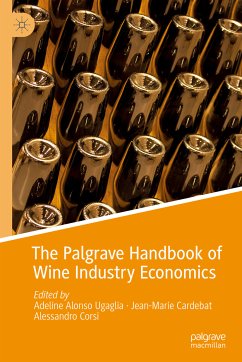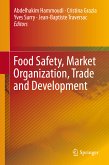This Palgrave Handbook offers the first international comparative study into the efficiency of the industrial organization of the global wine industry. Looking at several important vineyards of the main wine countries, the contributors analyze differences in implementation and articulation of three key stages: grape production, wine making and distribution (marketing, selling and logistics). By examining regulations, organization theory, industry organizational efficiency and vertical integration, up to date strategies in the sector are presented and appraised. Which models are most efficient? What are the most relevant factors for optimal performance? How do reputation and governance impact the industry? Should different models co-exist within the wine countries for global success?
This comprehensive volume is essential reading for students, researchers and professionals in the wine industry.
Adeline Alonso Ugaglia is Associate Professor of Economics at Bordeaux Sciences Agro, France.
Jean-Marie Cardebat is Professor of Economics at the University of Bordeaux and Affiliate Professor at INSEEC Bordeaux, France.
Alessandro Corsi is Associate Professor of Agricultural Economics at the University of Turin, Italy.
This comprehensive volume is essential reading for students, researchers and professionals in the wine industry.
Adeline Alonso Ugaglia is Associate Professor of Economics at Bordeaux Sciences Agro, France.
Jean-Marie Cardebat is Professor of Economics at the University of Bordeaux and Affiliate Professor at INSEEC Bordeaux, France.
Alessandro Corsi is Associate Professor of Agricultural Economics at the University of Turin, Italy.
Dieser Download kann aus rechtlichen Gründen nur mit Rechnungsadresse in A, B, BG, CY, CZ, D, DK, EW, E, FIN, F, GR, HR, H, IRL, I, LT, L, LR, M, NL, PL, P, R, S, SLO, SK ausgeliefert werden.









